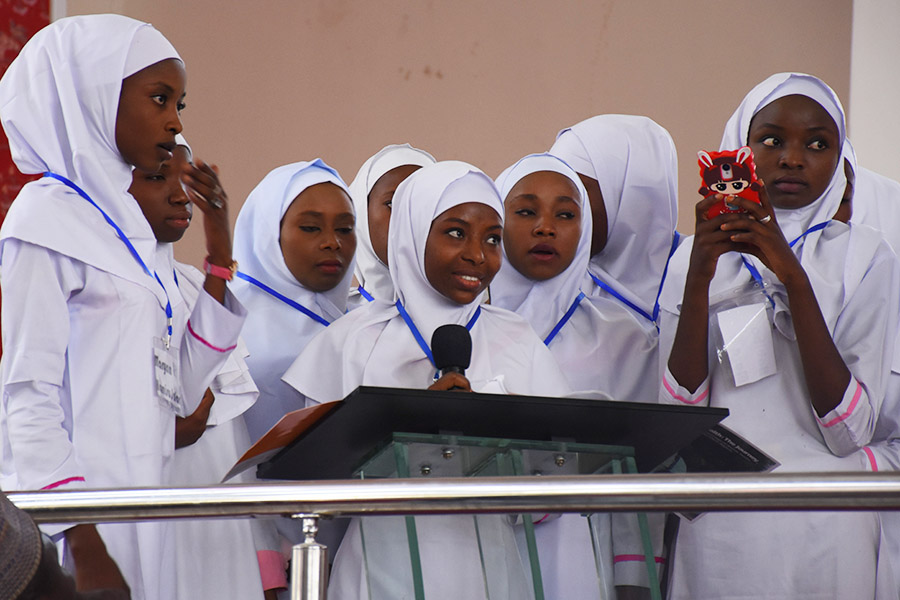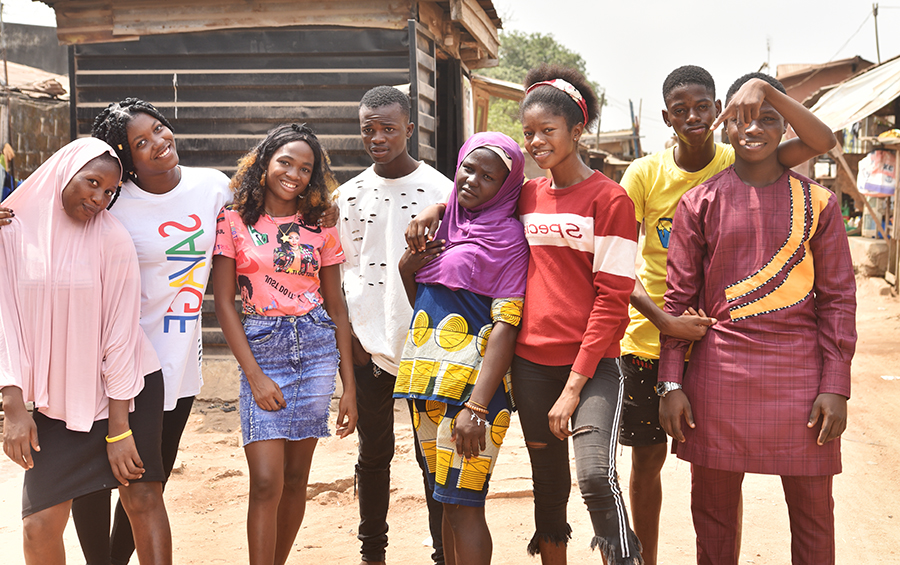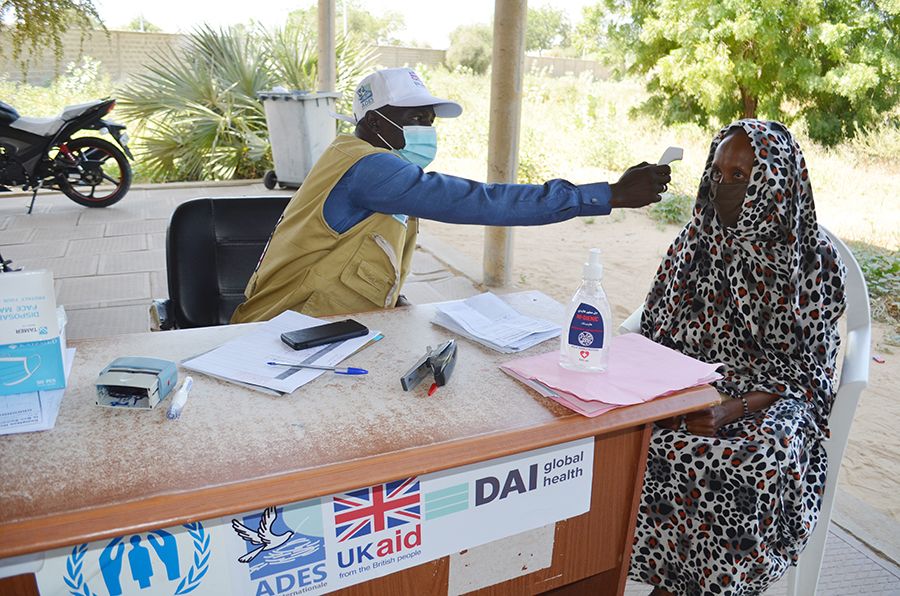Health equity will be a reality when all people have the same opportunity to attain their full potential for health and wellbeing, and when unfair and avoidable differences in health status no longer exist. Currently, we are far from that ideal, particularly for women and girls, and especially for women and girls among the rural poor in low- and middle-income countries.
But there are powerful examples of programmatic approaches that advance gender health equity. Here we focus on three of them: changing harmful gender norms, increasing women’s participation in decision making, and supporting local influencers to lead change.
Changing Harmful Norms
Social norms and cultural practices that discriminate, disadvantage, or harm women—such as excessive workloads, care burdens, multiple pregnancies, time poverty, and limited access to services—are some of the daily contributors to these prevailing gender inequities.
In rural northern Nigeria, for example, up to 90 percent of pregnant women deliver their babies without a skilled birth attendant, contributing to high rates of maternal and infant mortality. A key contributing factor is an assumption that women should not be attended by male healthcare workers, a problem exacerbated by the shortage of female healthcare workers. Across the world, harmful gender biases and norms like these perpetuate health inequity, affecting how health goods and services are sought, accessed, delivered, and experienced by women and girls.

The U.K. Foreign, Commonwealth & Development Office (FCDO)-funded Nigeria Women For Health project, for example, improved health equity for women by supporting 8,792 female students to enroll in midwifery, nursing, and community health extension worker training. Among the 1,551 female graduates to date, 38 percent were deployed to work in remote health facilities, representing a 134 percent increase by 2020 compared to 2012. The presence of female health workers both increased the number of deliveries with skilled birth attendance but also challenged and began to shift the idea that this was a male domain.
In another example from Nigeria, where rates of teenage pregnancy are consistently high, one in five babies is born to a teen parent and nearly one in three adolescent pregnancies are unplanned, in part due to low contraception usage among teens for whom such usage is subject to cultural stigma.
Research by the U.S. Agency for International Development (USAID) Youth-Powered Ecosystem to Advance Urban Adolescent Health project revealed that there was a pressing need to create “safe spaces” for young people because traditional public health providers are often judgmental of teens seeking contraception—questioning them about their sexual activity or even threatening to inform their parents.
So the DAI-led project established youth hubs that now provide confidential, free counseling and sexual health services, with an eye to mitigating the stigmas around contraception, ensuring more equitable access to health services, and reducing rates of teen pregnancy. The project’s partnership with the Lagos Ministry of Health links the youth hubs to the government’s supply chain, ensuring that contraception will be provided in the hubs after the project ends. DAI is also supporting the ministry to work with traditional public health providers and encourage them to respect teens and their privacy when providing contraception.

A Seat at the Table
As the late U.S. Congresswoman Shirley Chisholm said, “If they don’t give you a seat at the table, bring a folding chair.” Breaking the bias—this year’s International Women’s Day theme—means, among other things, upholding women’s and girls’ dignity, agency, and right to a say in the decisions that affect their lives. In all its health programming, DAI tries to respect this principle by consistently applying a gender lens and working with women and girls to help them find the confidence to bring their own metaphorical “folding chair” into decision-making situations, so they can shape the services, policies, and decisions that affect their lives and those of their children.
What this often means in practice is helping governments develop healthcare policies that benefit women, men, girls, and boys equally. And this in turn means engaging directly with women and girls, addressing any barriers that might stand in the way of that engagement, and ensuring that organizations representing marginalized communities have platforms to be heard.
For example, the FCDO’s Technical Assistance to Strengthen Capabilities (TASC) project supports governments to develop inclusive nutrition policies and programmes. In Madagascar, in partnership with national women’s groups, TASC, led by DAI, integrated gender, equity, and social inclusion components into the country’s National Action Plan for Nutrition—a blueprint for reducing malnutrition among men, women, girls, and boys, and marginalized groups, with recommendations specific to gender and equity.
FCDO’s Tackling Deadly Diseases in Africa (TDDA) programme, working across five countries, advocates for the participation of women in health security activities. In Cameroon, for example, the project insisted that its community health workers should include women, people living with disabilities, young people, religious minorities, and representatives from other groups. In Mali and Côte d’Ivoire, TDDA encouraged the inclusion of women in the National One Health Platform leadership and we are now exploring ways to integrate women’s affairs ministries into health security programmes. Overall, the average percentage of female participants across TDDA-supported events is 29 percent, with Uganda reaching 43 percent. Still some way to go, but trending the right way.
Local Influencers in the Lead
Understanding locally accepted practices, gender norms, and key influencers is also important to improving health equity. Women’s access to health information and children’s timely access to health services are often contingent on supportive husbands and fathers. Involving men in maternal and child health can create stronger relationships between men and women, improve health-related decisions in the household, and result in better health for entire communities.
For example, the MAMaZ Against Malaria (MAM) and MAM@Scale projects in Zambia aimed to reduce child malaria deaths by training community health volunteers to give ill children a pre-referral medication that would help them survive until they reached a health facility. To encourage male participation, the project employed men as community health volunteers and bicycle ambulance drivers. As a result, men began taking a greater interest in the health of their wives and children—84 percent of community health volunteers reported domestic violence had decreased, and 95 percent of female community health volunteers reported they had a stronger voice in the community. Overall, the project saved nearly 500 children’s lives and improved the lives of more than 8,000 people.

“Because I’m a man, I try to set an example. I tell other men that you can copy what I do…. I’m sensitizing other men to be more involved at home,” said one of the male community health volunteers. “Men should also take their children to the health center.”
Working carefully to change harmful cultural norms, increasing women’s participation in decision making, and letting local influencers lead are all strategies that can increase access to high-quality healthcare for women, girls, and other vulnerable groups. If the development community can methodically embed these strategies, build the agency of all members of society, and create opportunities that support individual and collective action, we will see the benefits in terms of reduced health inequalities.
Editor’s Note: Jacqui Moller Larsen, Osob Osman, and Paula Quigley contributed to this article.





